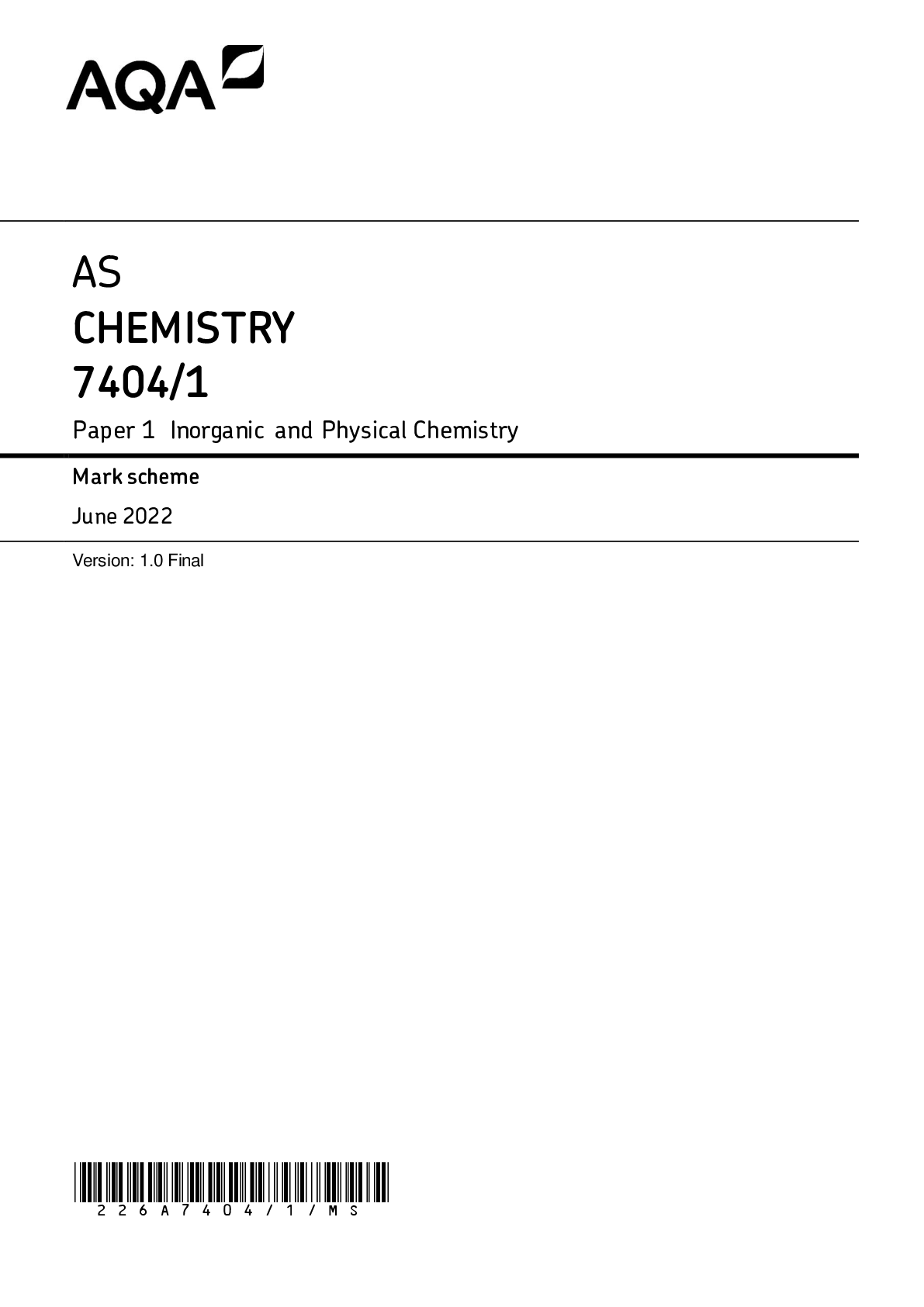Economics > AS Level Mark Scheme > AS ECONOMICS 7135/1 Paper 1 The Operation of Markets and Market Failure Mark scheme June 2022 Versio (All)
AS ECONOMICS 7135/1 Paper 1 The Operation of Markets and Market Failure Mark scheme June 2022 Version: 1.0 Final Mark Scheme MARK SCHEME – AS ECONOMICS – 7135/1 – JUNE 2022 2
Document Content and Description Below
AS ECONOMICS 7135/1 Paper 1 The Operation of Markets and Market Failure Mark scheme June 2022 Version: 1.0 Final Mark Scheme MARK SCHEME – AS ECONOMICS – 7135/1 – JUNE 2022 2 Mark schem... es are prepared by the Lead Assessment Writer and considered, together with the relevant questions, by a panel of subject teachers. This mark scheme includes any amendments made at the standardisation events which all associates participate in and is the scheme which was used by them in this examination. The standardisation process ensures that the mark scheme covers the students’ responses to questions and that every associate understands and applies it in the same correct way. As preparation for standardisation each associate analyses a number of students’ scripts. Alternative answers not already covered by the mark scheme are discussed and legislated for. If, after the standardisation process, associates encounter unusual answers which have not been raised they are required to refer these to the Lead Examiner. It must be stressed that a mark scheme is a working document, in many cases further developed and expanded on the basis of students’ reactions to a particular paper. Assumptions about future mark schemes on the basis of one year’s document should be avoided; whilst the guiding principles of assessment remain constant, details will change, depending on the content of a particular examination paper. Further copies of this mark scheme are available from aqa.org.uk Copyright information AQA retains the copyright on all its publications. However, registered schools/colleges for AQA are permitted to copy material from this booklet for their own internal use, with the following important exception: AQA cannot give permission to schools/colleges to photocopy any material that is acknowledged to a third party even for internal use within the centre. Copyright © 2022 AQA and its licensors. All rights reserved. MARK SCHEME – AS ECONOMICS – 7135/1 – JUNE 2022 3 SECTION A The following list indicates the correct answers used in marking the students’ responses. KEY LIST 1 B (most resources are scarce.) 11 C (Labour productivity rose but production fell between January and February.) 2 A (1800) 12 B (A fall in workers’ wages and a shift in preferences towards vegetarian food.) 3 D (Z to Y) 13 B (fixed costs become variable.) 4 A (demand that is elastic with respect to price.) 14 D (setting relative prices to determine the quantity of factors of production used in producing each good.) 5 A (consumption by one person does not reduce availability to others.) 15 C (£140) 6 D (No price-setting power and unlimited consumer information.) 16 C (New technology that increases the scope for economies of scale.) 7 A (£800) 17 D (substitute goods.) 8 B (economic methodology.) 18 D (the firm’s output is too low.) 9 C (positive production externalities of £4 million.) 19 A (consumers cannot buy as much as they would like.) 10 B (movement along the supply curve for cocoa.) 20 D (A tax at the rate P2 P3) Totals A 5 B 5 C 4 D 6 MARK SCHEME – AS ECONOMICS – 7135/1 – JUNE 2022 4 Level of response marking instructions Level of response mark schemes are broken down into levels, each of which has a descriptor. The descriptor for the level shows the average performance for the level. There are marks in each level. Before you apply the mark scheme to a student’s answer read through the answer and annotate it (as instructed) to show the qualities that are being looked for. You can then apply the mark scheme. Step 1 Determine a level Start at the lowest level of the mark scheme and use it as a ladder to see whether the answer meets the descriptor for that level. The descriptor for the level indicates the different qualities that might be seen in the student’s answer for that level. If it meets the lowest level then go to the next one and decide if it meets this level, and so on, until you have a match between the level descriptor and the answer. With practice and familiarity you will find that for better answers you will be able to quickly skip through the lower levels of the mark scheme. When assigning a level you should look at the overall quality of the answer and not look to pick holes in small and specific parts of the answer where the student has not performed quite as well as the rest. If the answer covers different aspects of different levels of the mark scheme you should use a best fit approach for defining the level and then use the variability of the response to help decide the mark within the level, ie if the response is predominantly level 3 with a small amount of level 4 material it would be placed in level 3 but be awarded a mark near the top of the level because of the level 4 content. Step 2 Determine a mark Once you have assigned a level you need to decide on the mark. The descriptors on how to allocate marks can help with this. The exemplar materials used during standardisation will help. There will be an answer in the standardising materials which will correspond with each level of the mark scheme. This answer will have been awarded a mark by the Lead Examiner. You can compare the student’s answer with the example to determine if it is the same standard, better or worse than the example. You can then use this to allocate a mark for the answer based on the Lead Examiner’s mark on the example. You may well need to read back through the answer as you apply the mark scheme to clarify points and assure yourself that the level and the mark are appropriate. Indicative content in the mark scheme is provided as a guide for examiners. It is not intended to be exhaustive and you must credit other valid points. Students do not have to cover all of the points mentioned in the Indicative content to reach the highest level of the mark scheme. An answer which contains nothing of relevance to the question must be awarded no marks. MARK SCHEME – AS ECONOMICS – 7135/1 – JUNE 2022 5 The levels of response grid below should be used when marking the 25 mark questions. Level of response Response Max 25 marks 5 Sound, focused analysis and well-supported evaluation that: • is well organised, showing sound knowledge and understanding of economic terminology, concepts and principles with few, if any, errors • includes good application of relevant economic principles to the given context and, where appropriate, good use of data to support the response • includes well-focused analysis with clear, logical chains of reasoning • includes supported evaluation throughout the response and in a final conclusion. 21–25 marks 4 Sound, focused analysis and some supported evaluation that: • is well organised, showing sound knowledge and understanding of economic terminology, concepts and principles with few, if any, errors • includes some good application of relevant economic principles to the given context and, where appropriate, some good use of data to support the response • includes some well-focused analysis with clear, logical chains of reasoning • includes some reasonable, supported evaluation. 16–20 marks 3 Some reasonable analysis but generally unsupported evaluation that: • focuses on issues that are relevant to the question, showing satisfactory knowledge and understanding of economic terminology, concepts and principles but some weaknesses may be present • includes reasonable application of relevant economic principles to the given context and, where appropriate, some use of data to support the response • includes some reasonable analysis but which might not be adequately developed or becomes confused in places • includes fairly superficial evaluation; there is likely to be some attempt to make relevant judgments but these are not well-supported by arguments and/or data. 11–15 marks 2 A fairly weak response with some understanding that: • includes some limited knowledge and understanding of economic terminology, concepts and principles but some errors are likely • includes some limited application of relevant economic principles to the given context and/or data to the question • includes some limited analysis but it may lack focus and/or become confused • includes attempted evaluation which is weak and unsupported. 6–10 marks 1 A very weak response that: • includes little relevant knowledge and understanding of economic terminology, concepts and principles • includes application to the given context which, at best, is very weak • includes attempted analysis which is weak and unsupported. 1–5 marks MARK SCHEME – AS ECONOMICS – 7135/1 – JUNE 2022 6 Section B Context 1 WATER Total for this context: 50 marks 2 1 Define ‘profit’ Extract B (line 9). [3 marks] Level of response Response Max 3 marks 3 • A full and precise definition is given. 3 marks 2 • The substantive content of the definition is correct, but there may be some imprecision or inaccuracy. 2 marks 1 • Some fragmented points are made. 1 mark Example of acceptable definition worth 3 marks: • total revenue minus total cost. Examples of a definition worth 2 marks: • revenue minus cost (no total) • the difference between total revenue and total cost (no direction) • the reward to an entrepreneur Examples of a definition worth 1 mark: • the difference between revenue and cost (no total or direction) • money made by firms. MAXIMUM FOR QUESTION 21: 3 MARKS MARK SCHEME – AS ECONOMICS – 7135/1 – JUNE 2022 7 2 2 Extract C (line 11) states: ‘a bath may use 80 litres of water but a shower half as much’. If a litre of water costs 0.4p, calculate how much money would be saved in a week if a family of four each had a shower every day instead of a bath. [4 marks] Calculation involves 40 × 4 × 7 × 0.4p = 448p or £4.48 Response Max 4 marks For the correct answer (units required): £4.48 or 448p 4 marks For the correct answer but with incorrect or missing units: 4.48 or 448 or £448 or £44.8 (for example) 3 marks For the correct answer per person: £1.12 (or 112p) or per day £0.64 (or 64p) OR For the correct calculation but the wrong answer: 40 × 4 × 7 × 0.4 2 marks For the correct answer per day or per person but with incorrect or missing units: 1.12, 112, 0.64, 64 or £64 (for example) OR For multiplication of any three of the four required figures, with or without correct units or answer: 40 × 4 × 7 or 40 × 4 × 0.4 or 40 × 7 × 0.4 or 4 × 7 × 0.4 1 mark MAXIMUM FOR QUESTION 22: 4 MARKS MARK SCHEME – AS ECONOMICS – 7135/1 – JUNE 2022 8 2 3 Use Extract A to identify two significant points of comparison between the average annual water usage of households with and without a water meter. [4 marks] Award up to 2 marks for each point of comparison made. Response Max 4 Marks Identifies a significant point of comparison. Makes accurate use of the data to support the comparison identified. Unit of measurement given accurately. 2 marks Identifies a significant point of comparison but only one piece of data is given when two are needed and/or no unit of measurement is given and/or the unit of measurement is inaccurate and/or the wrong date is given. OR Identifies a significant feature of one data series with accurate use of the data (including the unit of measurement) but no comparison is made. 1 mark If a candidate identifies more than two significant points of comparison, reward the best two. Significant points include: • the lowest annual water usage with a meter is 66 cubic metres for a 1-person household and the lowest annual water usage without a meter for a 1-person household is 54 cubic metres • the highest annual water usage with a meter is 216 cubic metres for a 6-person household and the highest annual water usage without a meter for a 6-person household is 200 cubic metres • the average annual water usage is lower with a meter than without for households of 1–4 people, for example a 1–person household uses 54 cubic metres with a meter and 66 cubic metres without a meter • the average annual water usage is higher with a meter than without for households of 5 and 6 people, for example a 5–person household uses 191 cubic metres with a meter and 182 cubic metres without a meter • the greatest saving in average annual water usage with a meter is for a 1–person household, using 54 cubic metres with a meter and 66 cubic metres without a meter (a saving of 12 cubic metres) • the smallest saving in average annual water usage with a meter is for a 4–person household, using 164 cubic metres with a meter and 165 cubic metres without a meter (a saving of 1 cubic metre) • the greatest increase in average annual water usage with a meter is for a 6–person household, using 216 cubic metres with a meter and 200 cubic metres without a meter (an increase of 16 cubic metres) • the smallest increase in average annual water usage with a meter is for a 5–person household, using 191 cubic metres with a meter and 182 cubic metres without a meter (an increase of 9 cubic metres) • the most similar average annual water usage with and without a water meter is for 4–person households, who use 164 cubic metres with a meter and 165 cubic metres without a meter (a difference of 1 cubic metre) • the range of differences in average annual water usage with and without a water mater is a saving of 12 cubic metres for a 1–person household to an increase of 16 cubic metres for a 6–person household (a range of 28 cubic metres) • the greater the number of people in the household, the greater the average annual water usage with and without a meter, for example, for a 1–person household usage is 54 cubic metres with and 66 without a meter, but for a 6–person household it is 216 and 200 cubic metres respectively. MAXIMUM FOR QUESTION 23: 4 MARKS MARK SCHEME – AS ECONOMICS – 7135/1 – JUNE 2022 9 2 4 Extract C (line 20) states: ‘Perhaps a maximum price should be set for water’. Draw a diagram to show the impact on the market for water of setting a maximum price below the equilibrium. [4 marks] The correct diagram involves a supply and demand diagram, illustrating an initial equilibrium point, a maximum price below equilibrium and some indication of excess demand, either by writing ‘excess demand’ in the appropriate place or by labelling the two coordinates for supply and demand at this new price (q1 and q2 would be acceptable, for example, instead or qs and qd). excess demand Response Max 4 marks Accurately drawn D/S diagram showing initial equilibrium, a maximum price drawn below equilibrium, and the resulting disequilibrium with excess demand clearly illustrated, with both axes and all curves and coordinates correctly labelled. Excess demand could be illustrated by just showing qd and qs as above (for example) or by indicating the excess demand in some other meaningful way. 4 marks Accurately drawn D/S diagram showing a maximu [Show More]
Last updated: 1 year ago
Preview 1 out of 17 pages
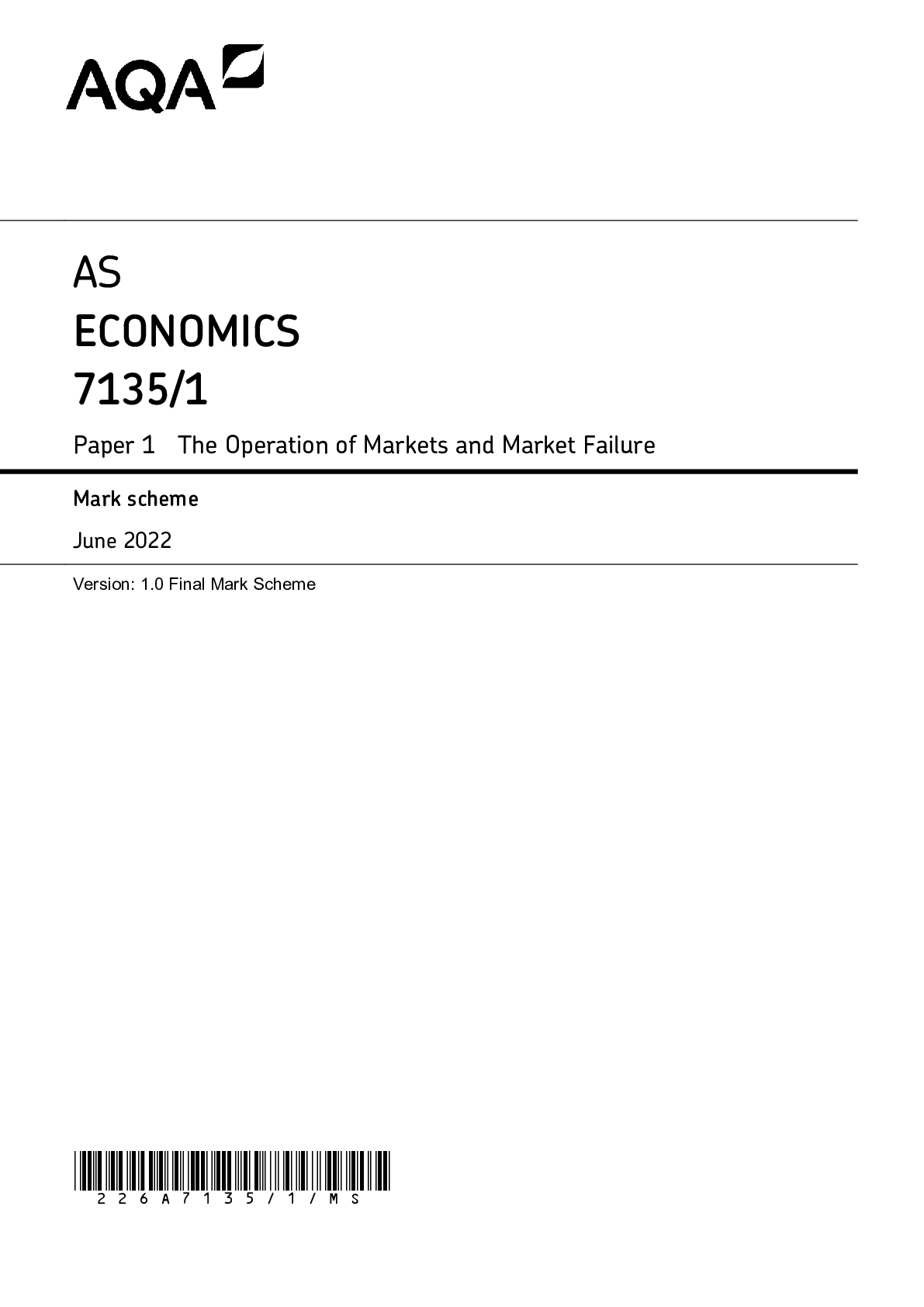
Reviews( 0 )
Document information
Connected school, study & course
About the document
Uploaded On
Apr 01, 2023
Number of pages
17
Written in
Additional information
This document has been written for:
Uploaded
Apr 01, 2023
Downloads
0
Views
76


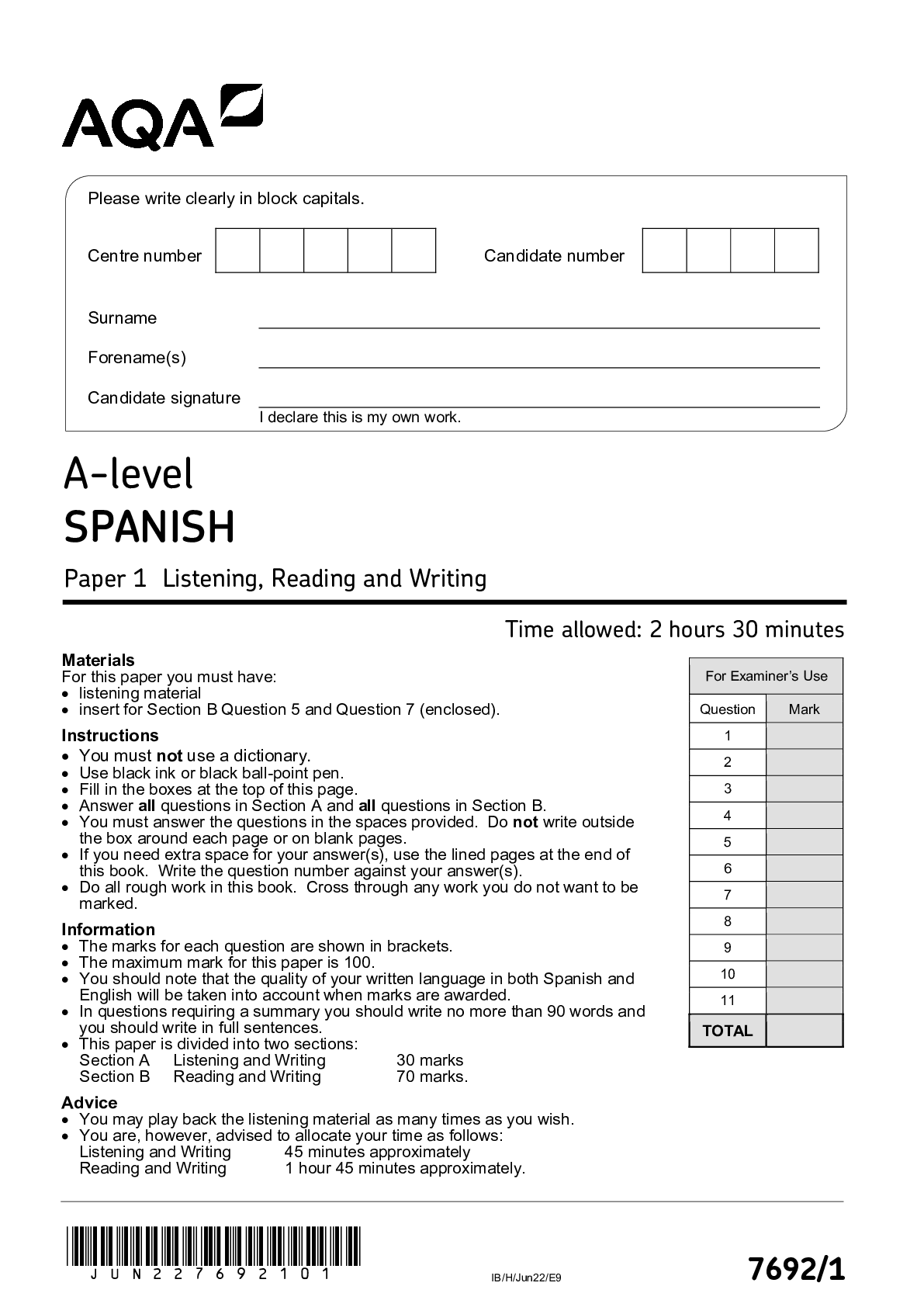

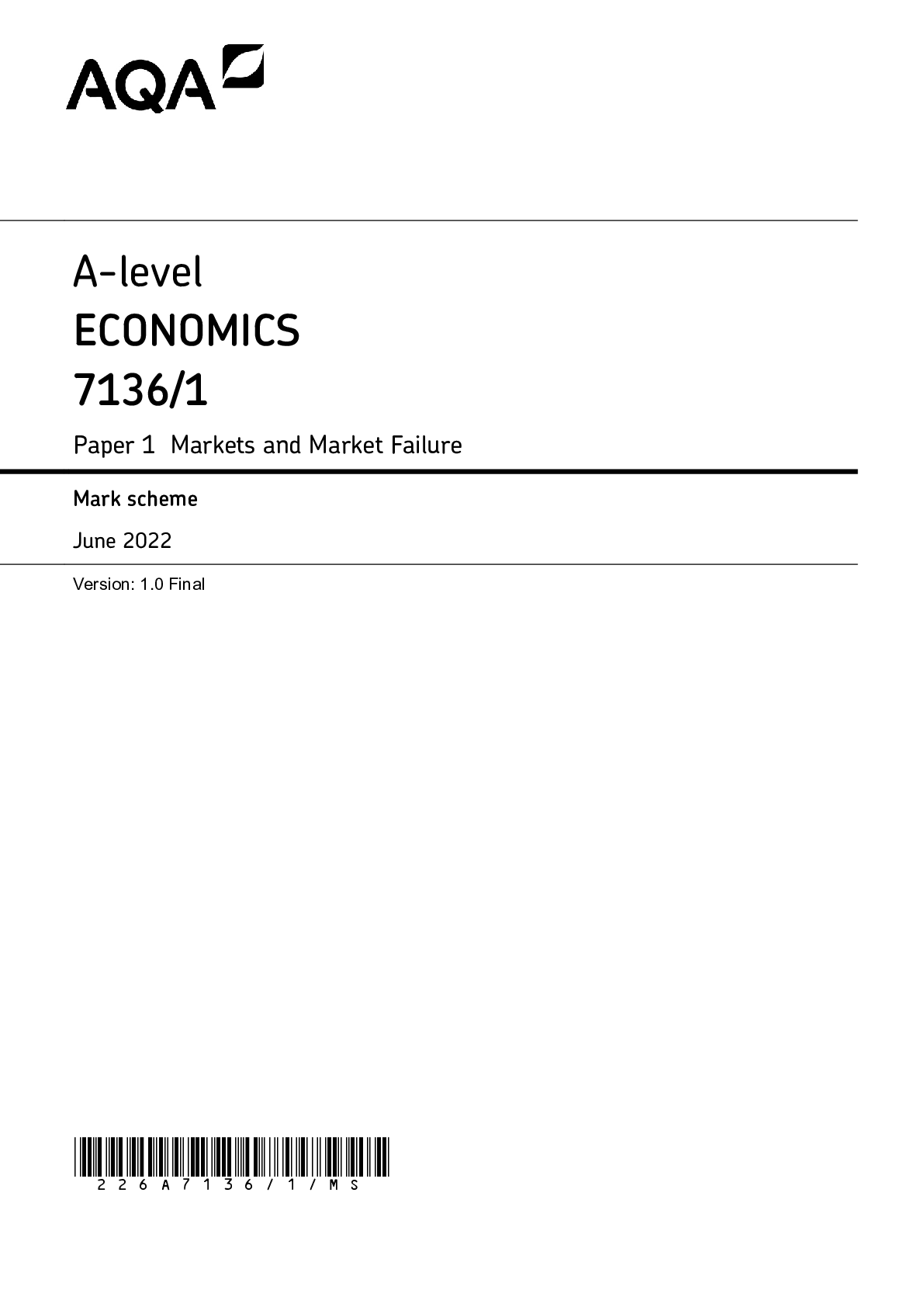

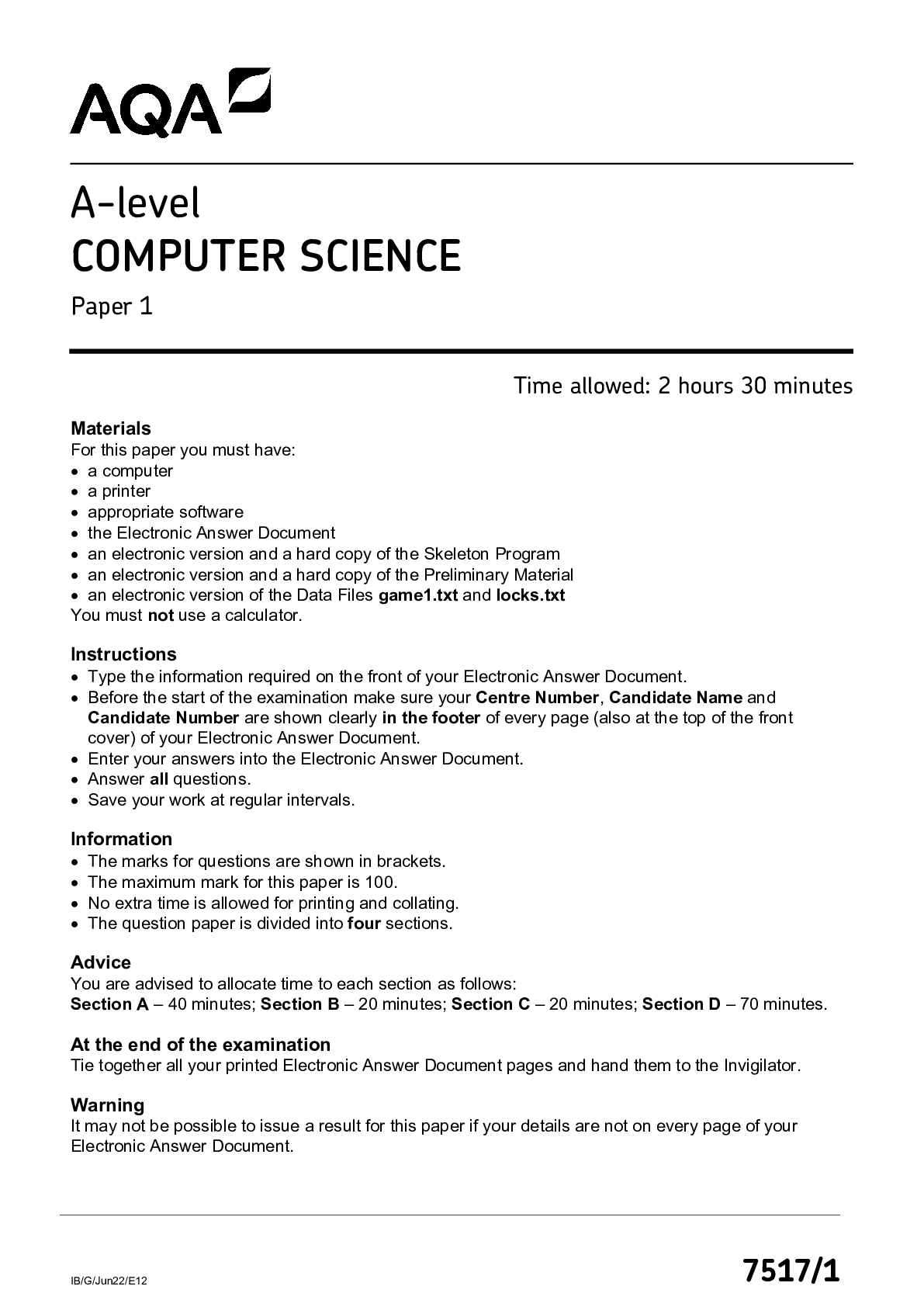
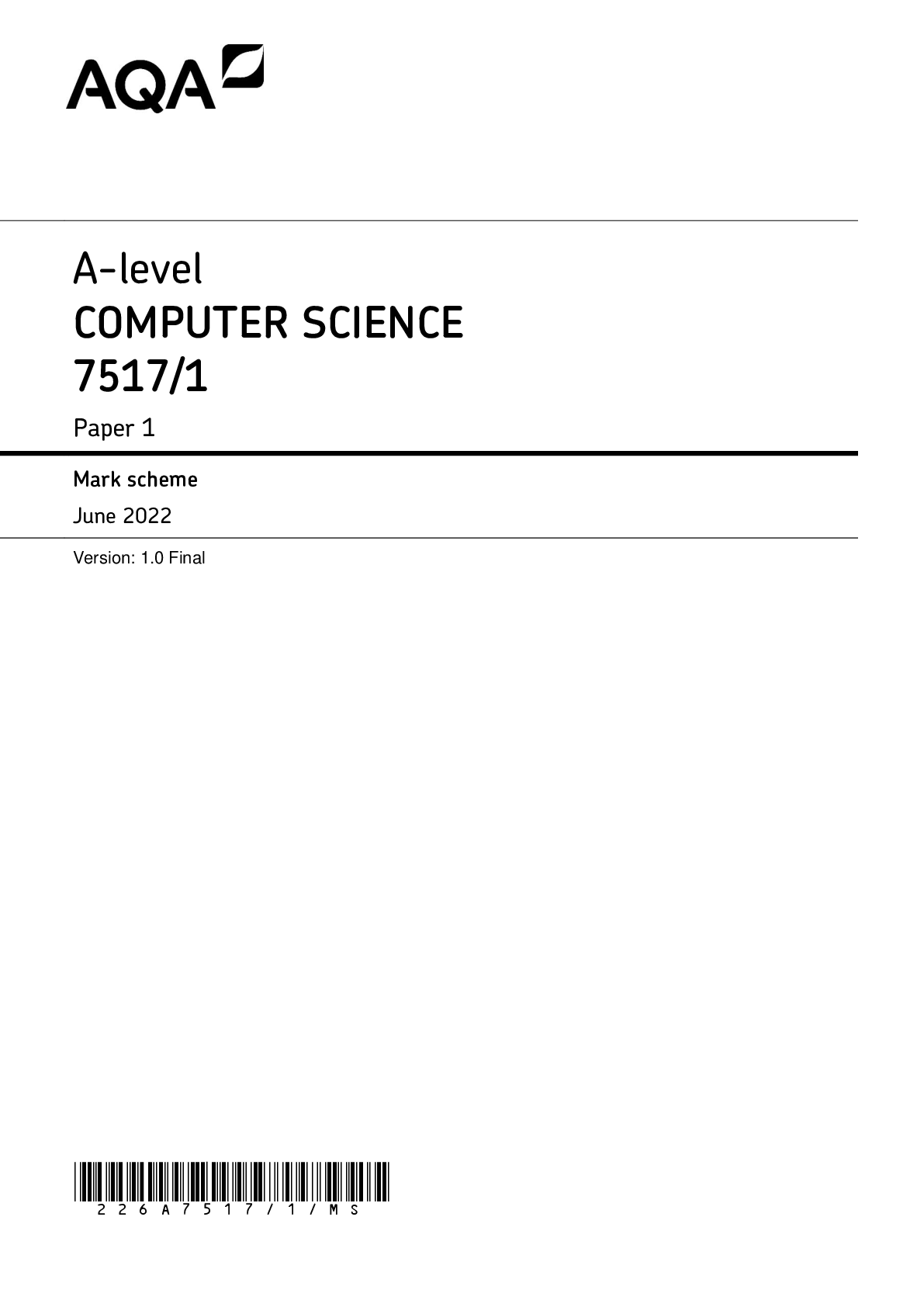

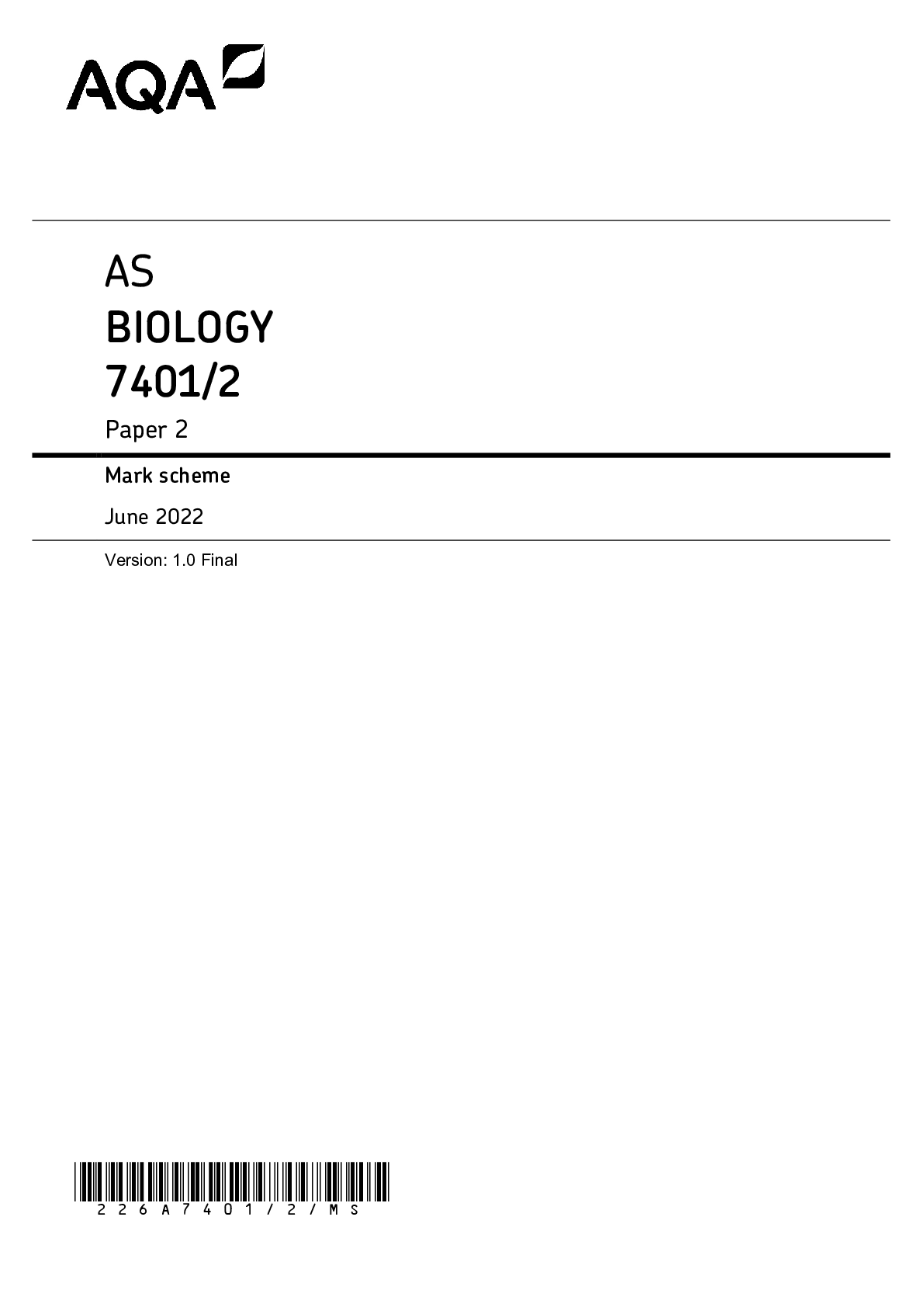
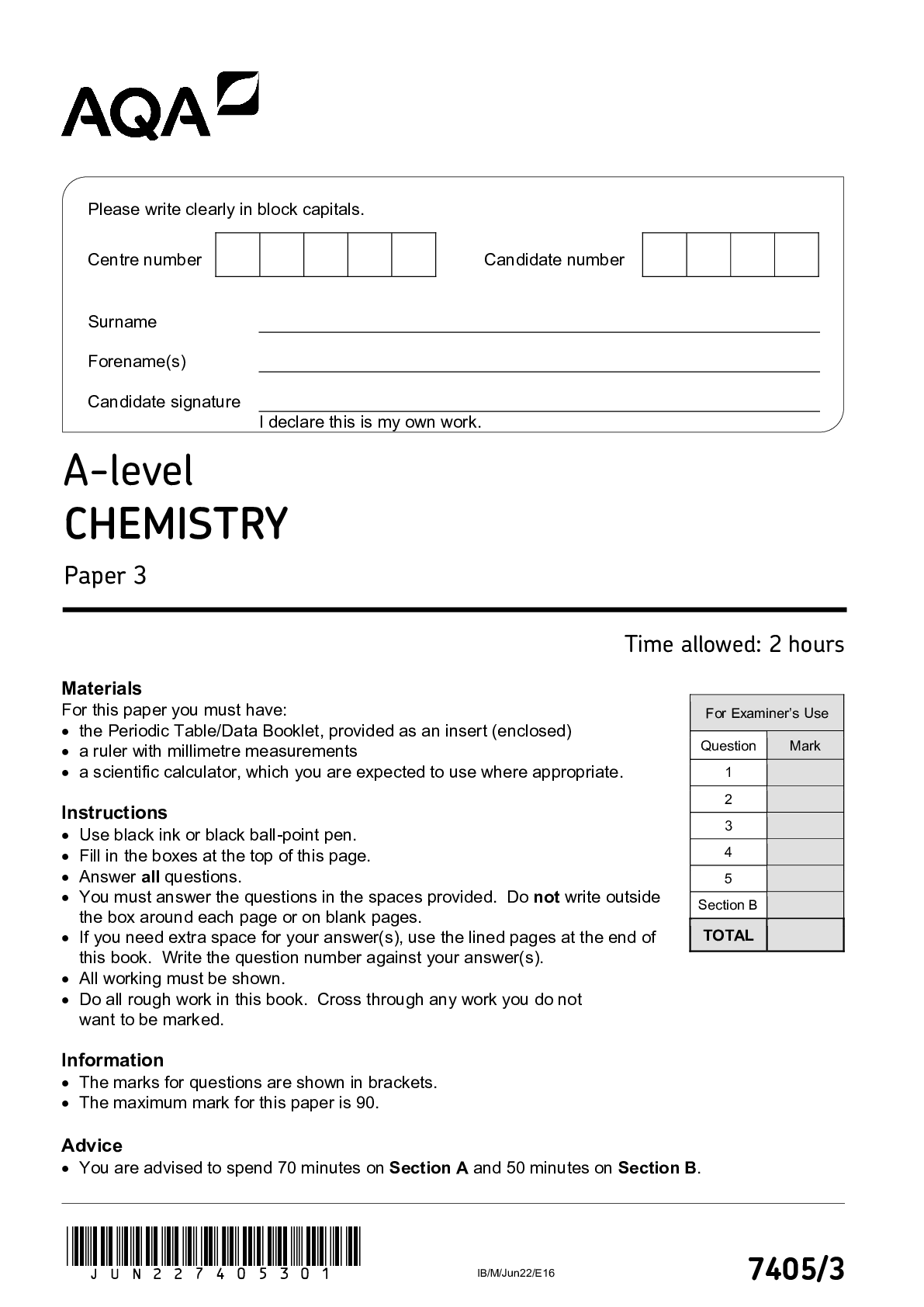

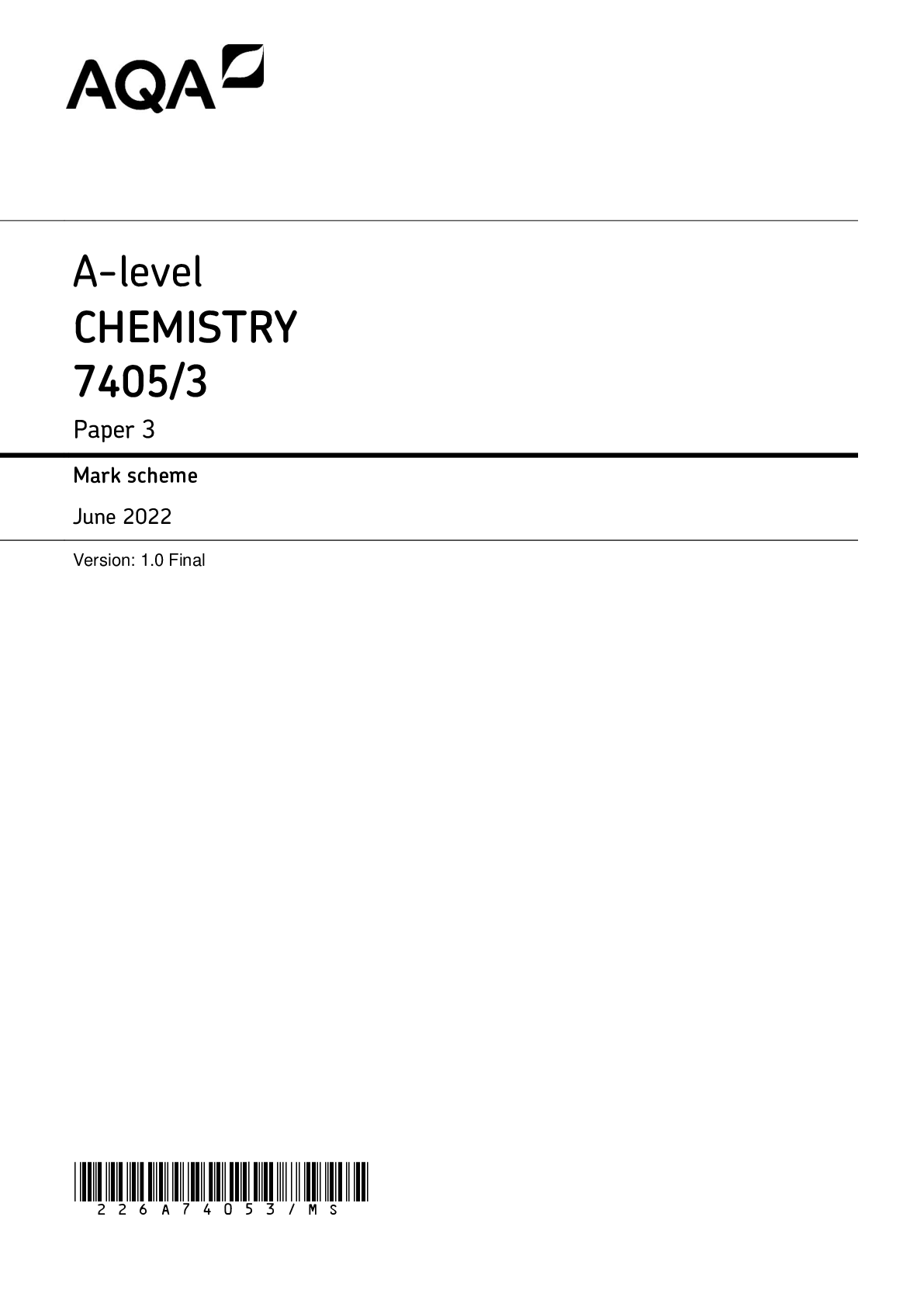
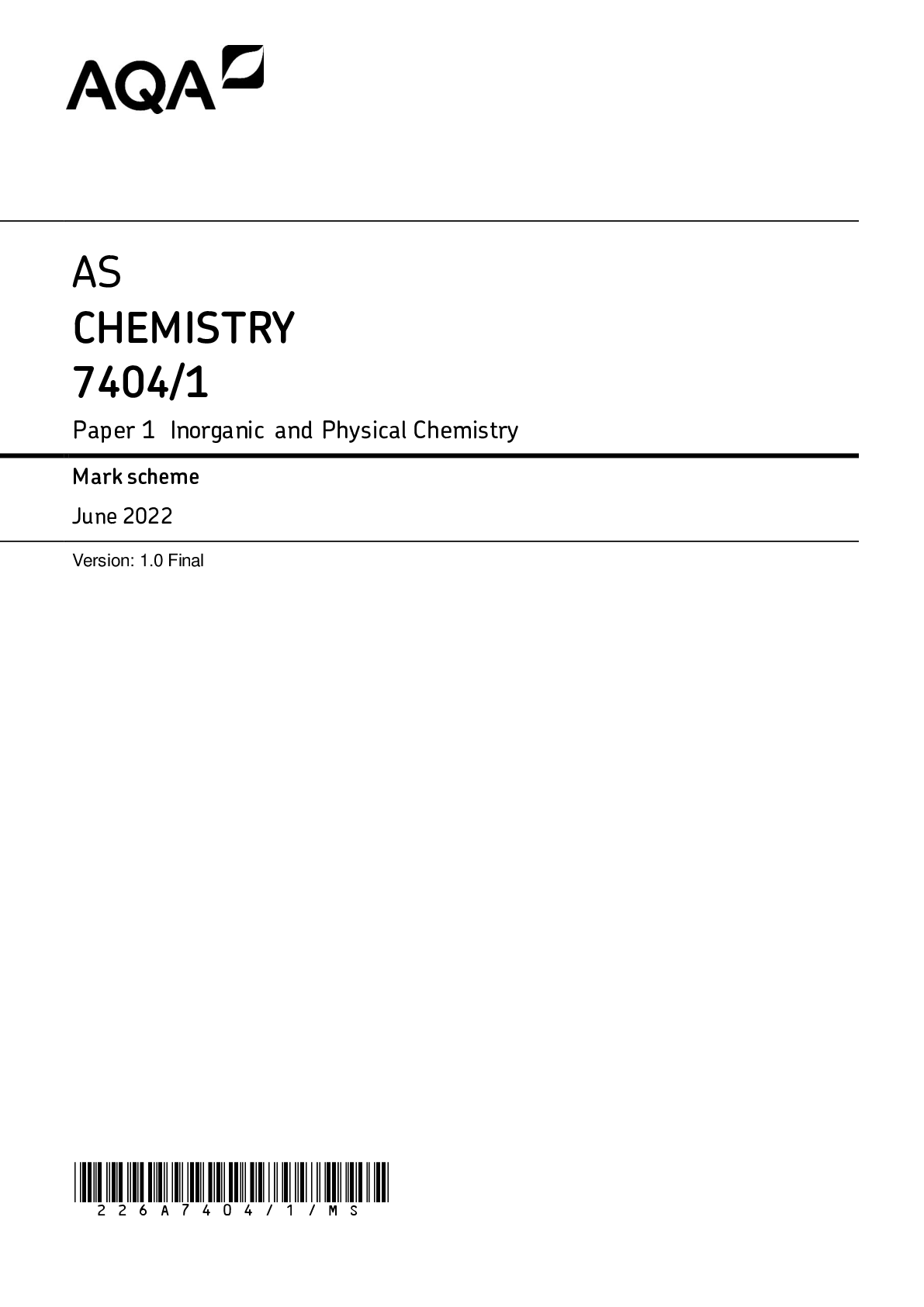
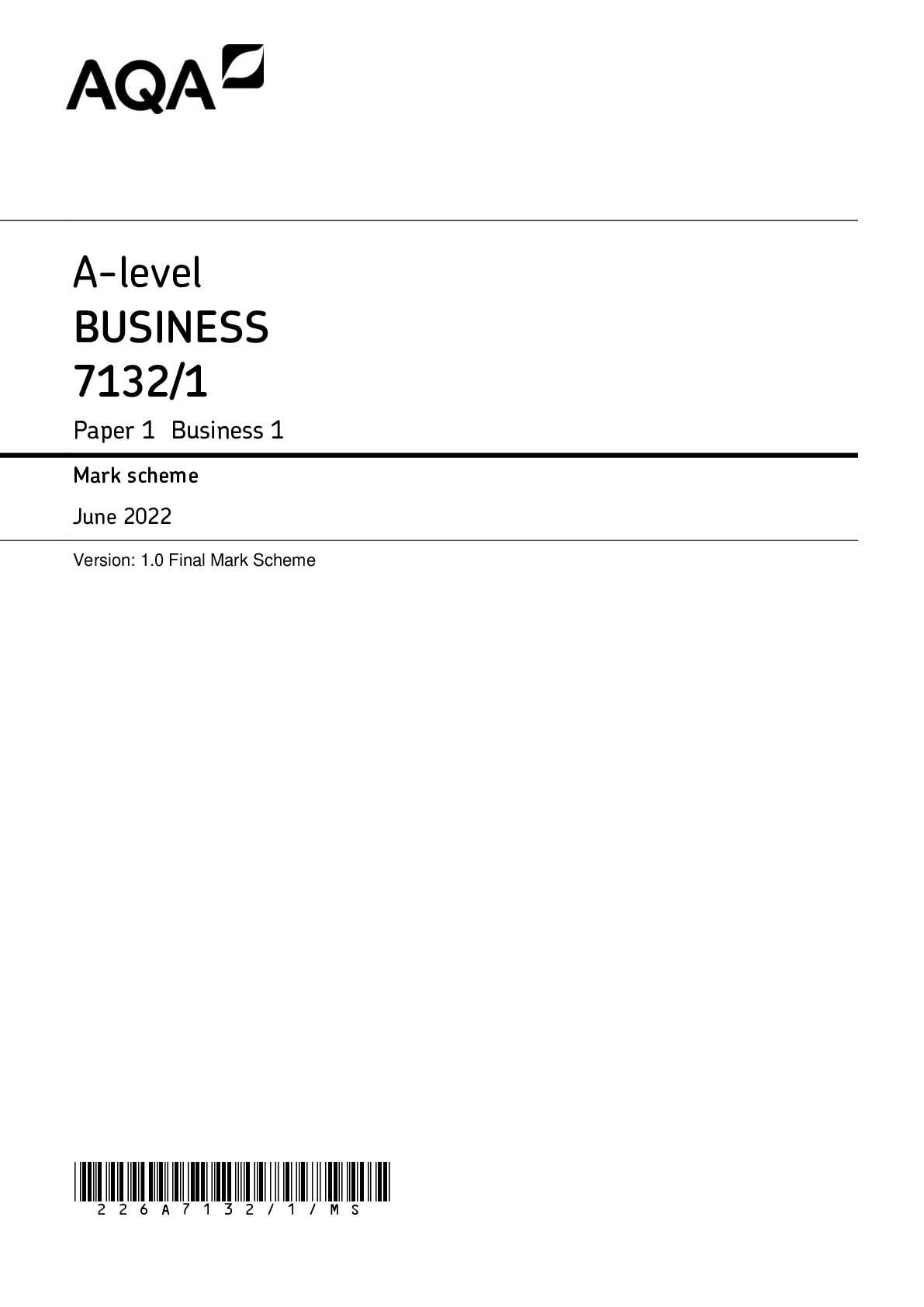
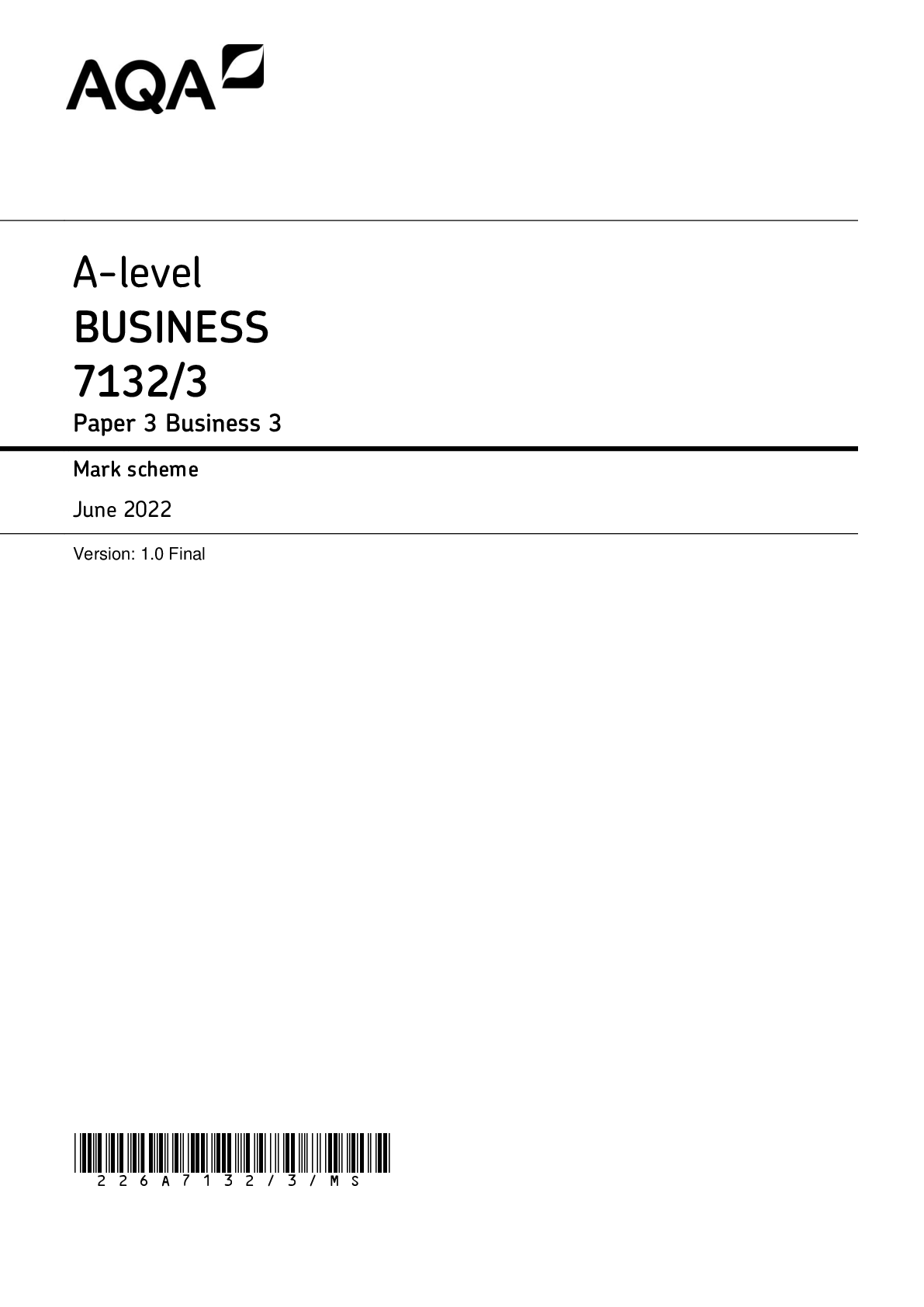
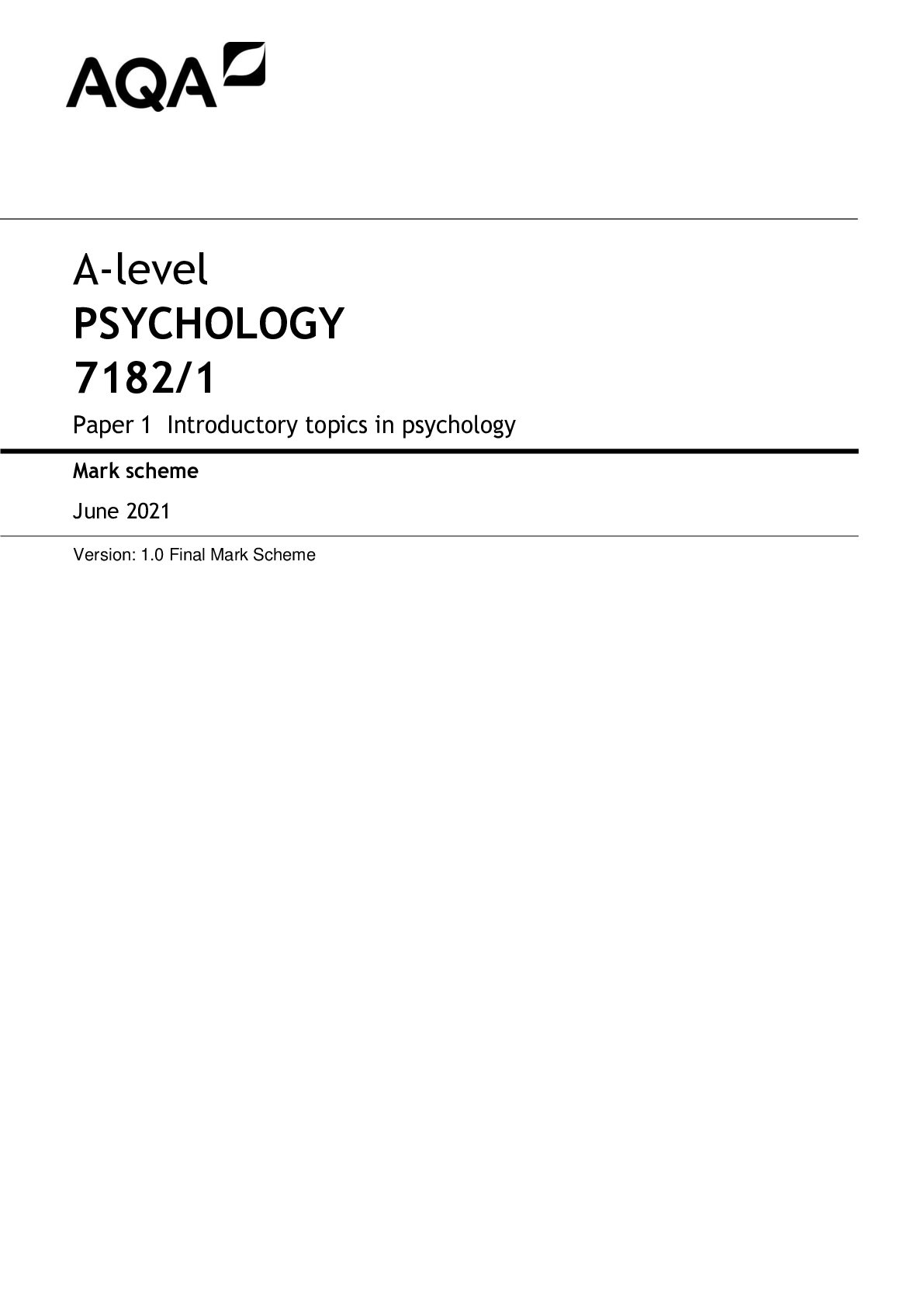
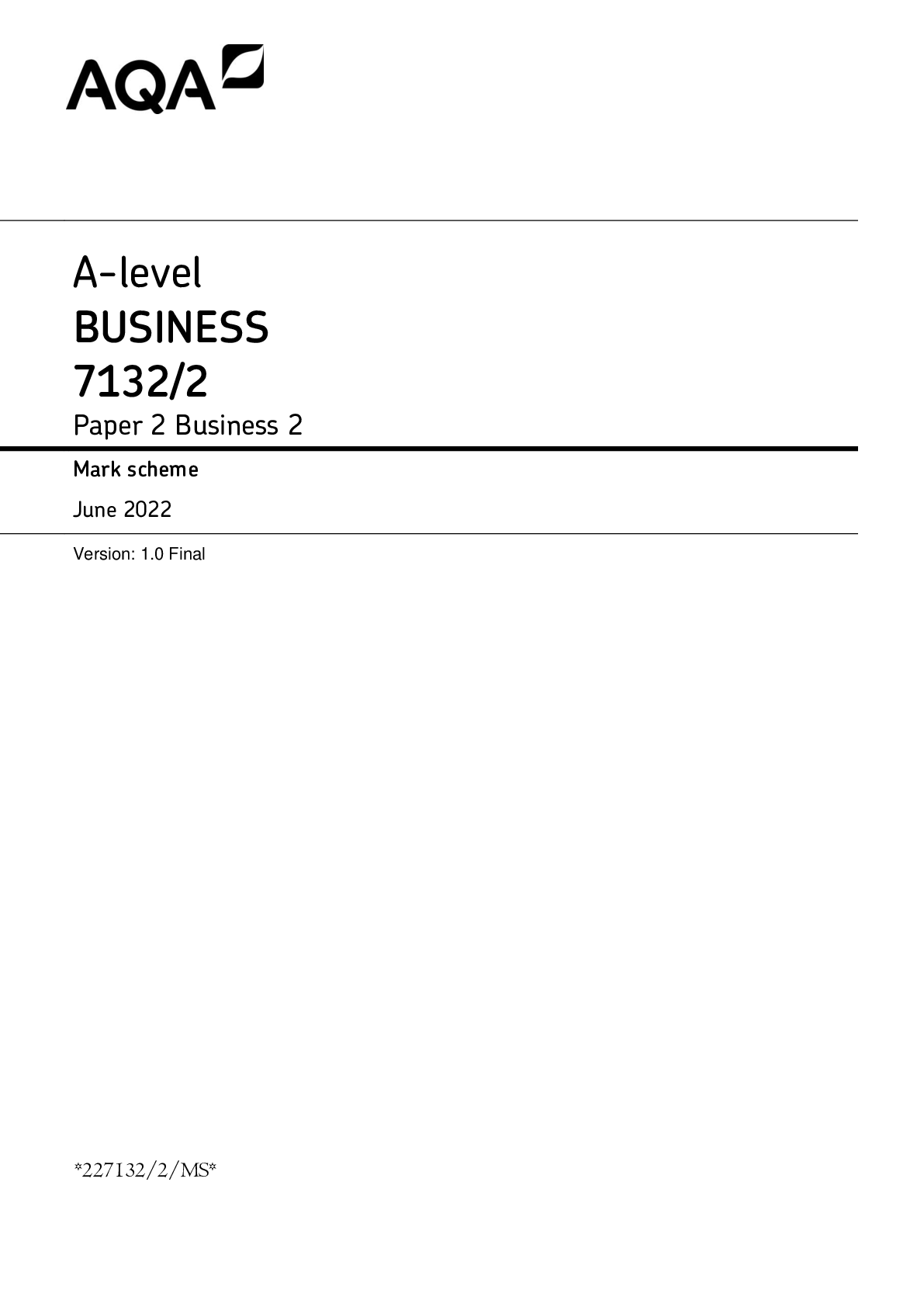


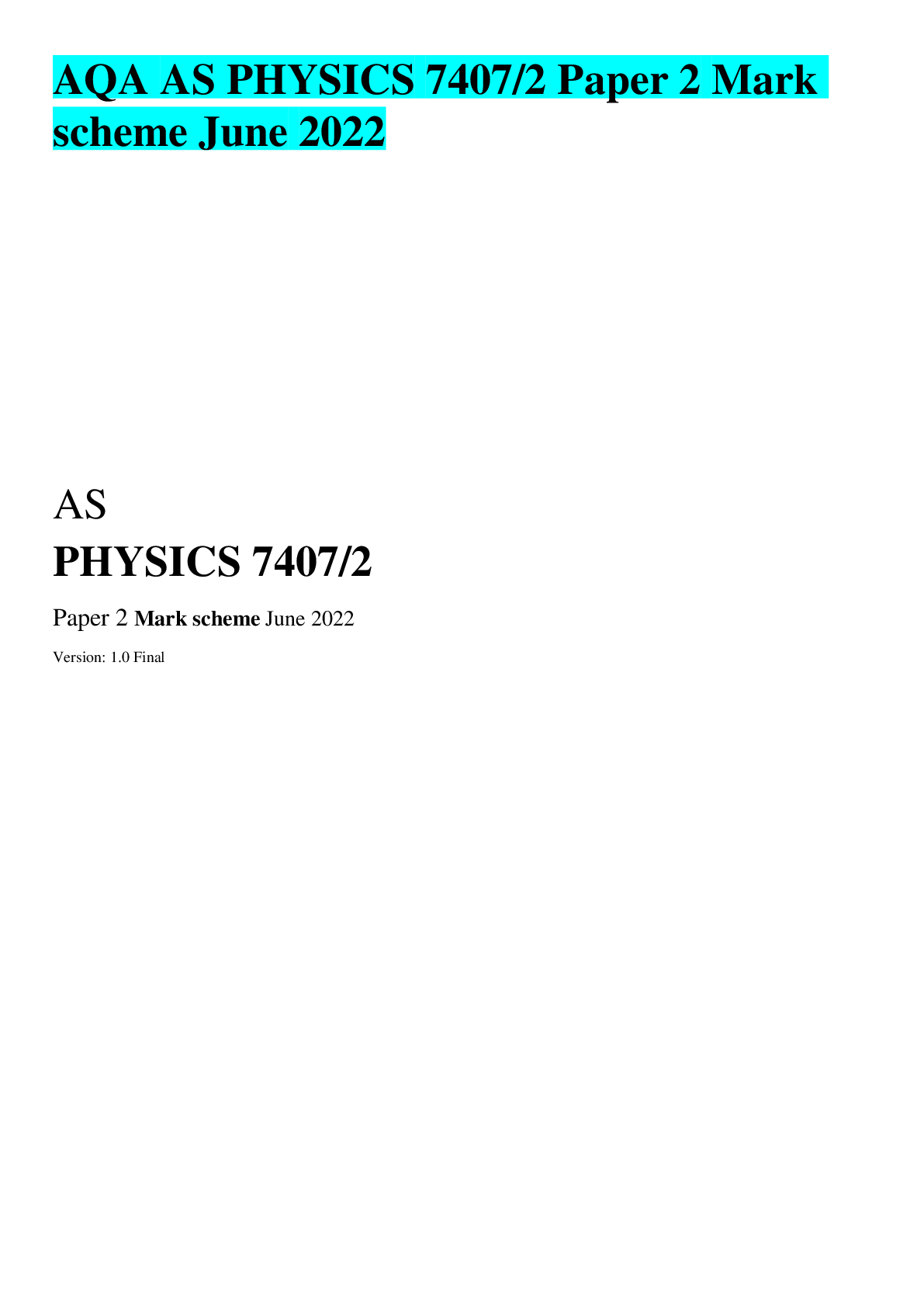
.png)

